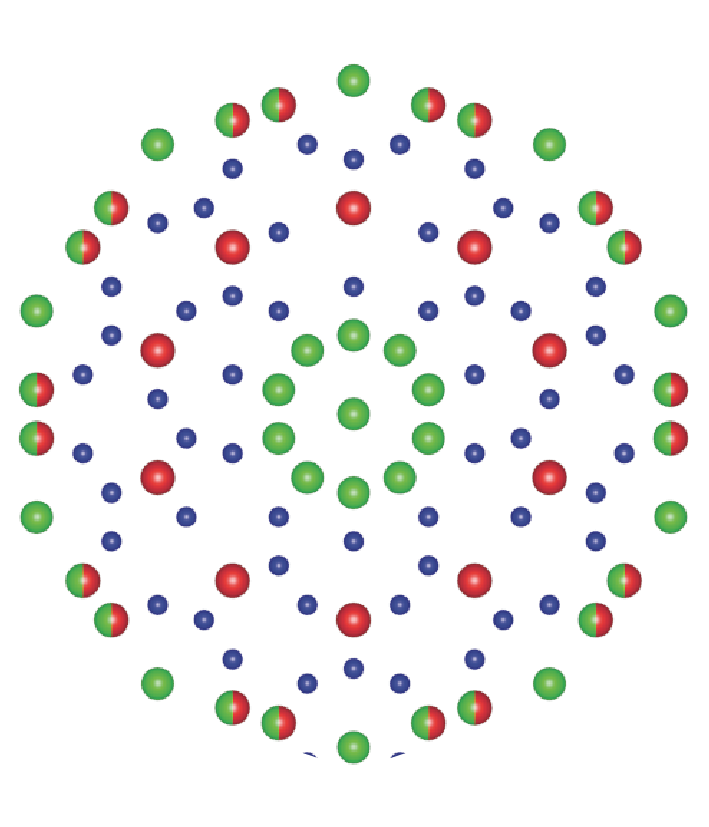IT-5-O-2999 Direct observations of local electronic states in a quasicrystal by STEM-EELS
Quasicrystals (QCs) have long-range ordered complex structure without periodicities. Stability of QCs has been discussed in terms of energetic gains in electron systems, because most QCs reveal pseudogaps in their density of states around Fermi level. In fact, many QCs have been discovered by tuning valence electron density based on Hume-Rothery rule. Therefore, understanding electronic structures in QCs may provide an important clue for their stabilization mechanism. Generally, it has been frequently discussed based on an interaction between Fermi surface and Brillouin zone boundary within the framework of nearly free electron model, providing an underlying physics of a Hume-Rothery’s empirical criteria. However, the electronic structures of QCs have not yet been fully understood, particularly being in microscopic-macroscopic relations. In the present work, we investigate local electronic states in Al-based QCs using electron energy loss spectroscopy (EELS) combined with scanning transmission electron microscopy (STEM).
The AlCuIr decagonal phase was used for the present study [1]. A cluster with a diameter of ~2 nm emerges as a building unit for AlCuIr decagonal phase (Fig. 1, 2). Principal components analysis clearly showed up the atomic-site dependence of plasmon loss spectra in a two-dimensional map correlated with the cluster arrangement. Qualitatively, there seems to be certain correlations between the plasmon peaks and the core-loss edges, Al L1, Ir O23, Ir N67 and Cu L23, all of which reveal different behaviours at the cluster centers and the edges (Fig. 3). All results indicate the cluster centers have metallic states, while the cluster edges have covalent states. First-principles calculations confirm the unusual electronic state. We analyse a distribution of covalent electrons by Fourier transformation of electron localization function. The distribution seems like a 10-fold charge density wave with Fermi wave length. It suggests that the Hume-Rothery mechanism play a key role even when the hybridization effect mainly contributes to pseudogap formation. Along with a context of orbital hybridization, the covalent electrons might reduce their energy by mimicking 10-fold charge density wave. On the other hand, the metallic regions at the cluster centers may have no contributions to the Hume-Rothery mechanism, since there are no distinguished peaks appeared along the 10-fold charge density wave at the relevant regions.
[1] 1. P. Kuczera, J. Wolny and W. Steurer, Acta Crystallographica B68 (2012), 578.
This work was conducted in Research Hub for Advanced Nano Characterization, The University of Tokyo, supported by the Ministry of Education, Culture, Sports, Science and Technology (MEXT), Japan. It is acknowledged that T. Seki is a research fellow of Japan Society for the Promotion of Science.


